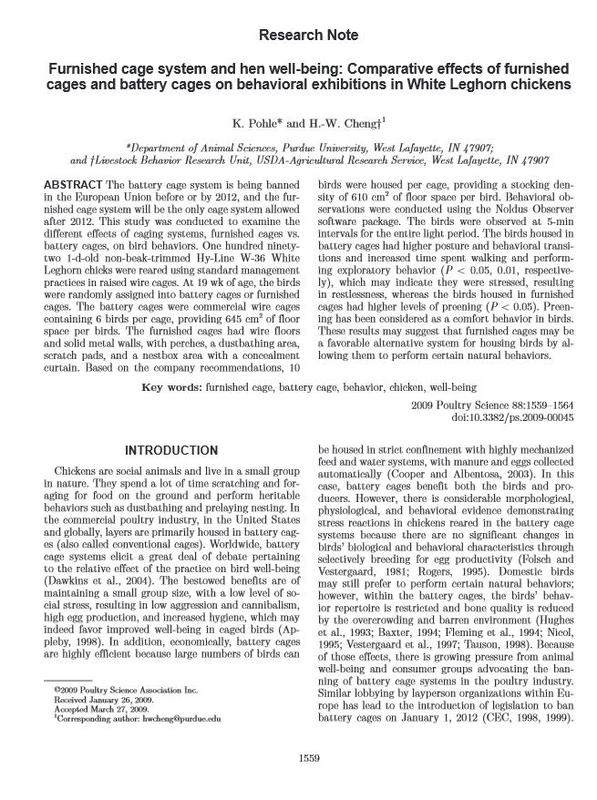Furnished cage system and hen well-being: Comparative effects of furnished cages and battery cages on behavioral exhibitions in White Leghorn chickens
Title
Furnished cage system and hen well-being: Comparative effects of furnished cages and battery cages on behavioral exhibitions in White Leghorn chickens
Date
Publisher
Poultry Science Association, Inc.
Subject
Excerpt
The battery cage system is being banned in the European Union before or by 2012, and the furnished cage system will be the only cage system allowed after 2012. This study was conducted to examine the different effects of caging systems, furnished cages vs. battery cages, on bird behaviors. One hundred ninety-two 1-d-old non-beak-trimmed Hy-Line W-36 White Leghorn chicks were reared using standard management practices in raised wire cages. At 19 wk of age, the birds were randomly assigned into battery cages or furnished cages. The battery cages were commercial wire cages containing 6 birds per cage, providing 645 cm² of floor space per birds. The furnished cages had wire floors and solid metal walls, with perches, a dustbathing area, scratch pads, and a nestbox area with a concealment curtain. Based on the company recommendations, 10 birds were housed per cage, providing a stocking density of 610 cm² of floor space per bird. Behavioral observations were conducted using the Noldus Observer software package. The birds were observed at 5-min intervals for the entire light period. The birds housed in battery cages had higher posture and behavioral transitions and increased time spent walking and performing exploratory behavior (P < 0.05, 0.01, respectively), which may indicate they were stressed, resulting in restlessness, whereas the birds housed in furnished cages had higher levels of preening (P < 0.05). Preening has been considered as a comfort behavior in birds. These results may suggest that furnished cages may be a favorable alternative system for housing birds by allowing them to perform certain natural behaviors.
Relation
Poultry Science
Volume 88
pp. 1559-1564
 An official website of the United States government.
An official website of the United States government.


